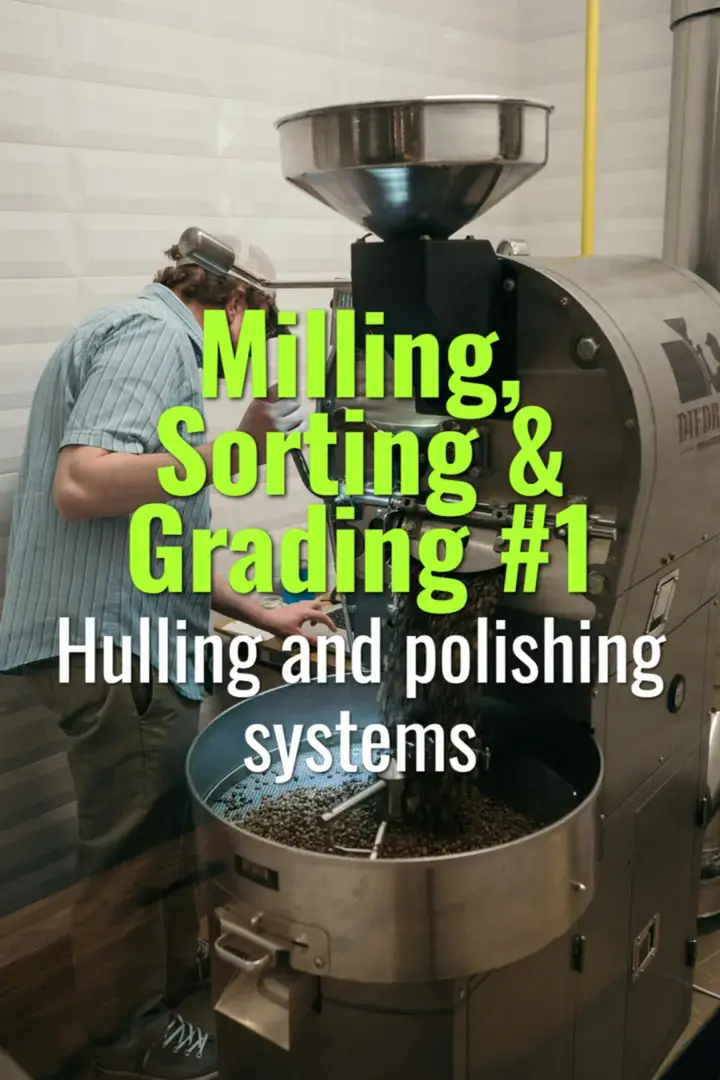Hulling and polishing systems
This topic explains how coffee is hulled and polished during dry milling, the types of equipment used, and how these steps influence bean quality, appearance, and market acceptance.
- Coffee Basics Nerds
- 2 min read
Article 1 of 12 in Milling, Sorting & Grading/

Hulling in Coffee Processing
- Purpose: Remove the outer protective layer before export.
- Types:
- Parchment coffee (washed/honey): Hulling removes the parchment layer.
- Natural coffee (dry processed): Hulling removes dried husk and fruit skin.
- Machines used: Disc hullers, friction hullers, or rubber roller hullers.
- Key risks:
- Over-hulling → broken or chipped beans.
- Under-hulling → residual parchment or husk left.
Polishing Systems
- Optional step after hulling.
- Beans pass through friction polishers to remove silver skin.
- Creates smoother, shinier appearance.
- Purpose: Primarily aesthetic, improves visual uniformity for buyers.
- Risks: Excess polishing can heat beans, causing micro-cracks and flavor loss.
Factors Affecting Efficiency
- Bean moisture: 10–12% is ideal for clean hulling.
- Machine calibration: Determines level of breakage vs cleanliness.
- Feed rate: Too fast → uneven results; too slow → inefficient throughput.
Quality & Market Implications
- Hulling quality: Directly impacts defect count and grading.
- Polishing: Buyers in some markets (e.g., Asia, Middle East) prefer polished beans; specialty markets often see it as cosmetic.
- Traceability: Records link hulled lots to pre-hulling parchment storage.
Best Practices
- Calibrate hullers regularly to minimize breakage.
- Avoid over-drying beans before hulling.
- Decide on polishing based on target market preference.
Lasting Importance
Hulling and polishing systems are critical steps in preparing export-ready coffee. While hulling is essential for bean release and grading, polishing remains an optional but market-influential step that can enhance visual appeal and buyer acceptance when applied with care.